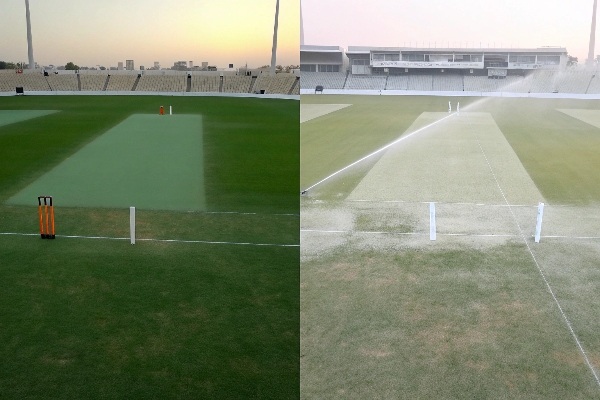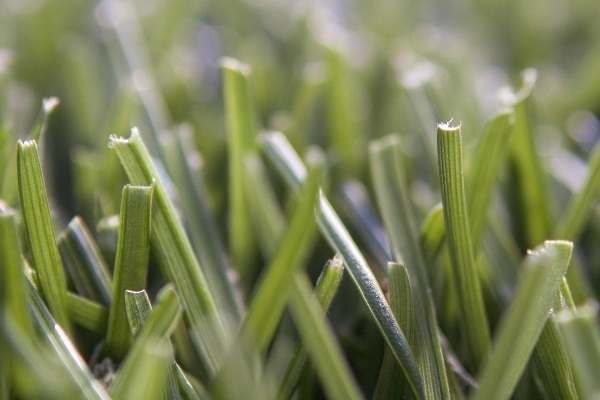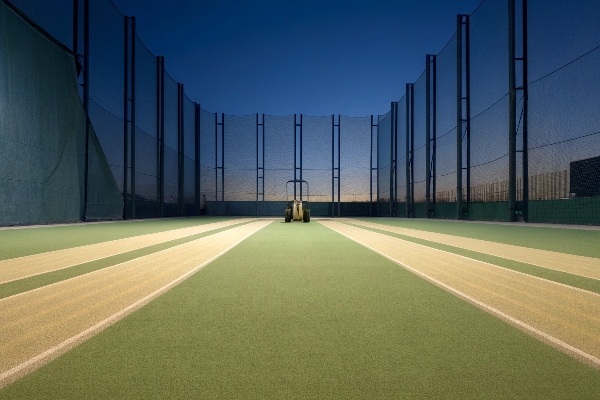Struggling with high maintenance costs and canceled matches due to bad weather? Your natural grass pitch might be the problem, costing you time and money every season.
Artificial grass is often a better choice for many cricket applications. It provides consistent playability, requires significantly less maintenance, and is more durable. This makes it ideal for training facilities, schools, and community grounds. Professional venues, however, often still prefer high-quality natural turf.

Choosing the right surface for a cricket field is a big decision. It affects game performance, maintenance budgets, and how often the field can be used. It’s more than just picking something green; it’s about creating the perfect playing experience. You need to understand the pros and cons of each option to make an informed choice. Let’s dig deeper into the key questions to find the best solution for your needs.
Is the grass in the cricket ground real or fake?
Ever watch a professional cricket match and wonder if the perfectly green field is real? The flawless look can be deceiving, making you question what the players are actually using.
Most international and top-tier professional cricket grounds use real, highly maintained natural grass. However, artificial grass is extremely common for the central pitch in training facilities, schools, and local clubs. These synthetic pitches are designed for heavy use and consistent performance.

The choice between real and artificial grass often comes down to the venue’s purpose and budget. Top-level stadiums have the resources for teams of groundskeepers to maintain pristine natural turf, which is traditionally favored for major competitions. I remember visiting a world-famous cricket ground, and the head groundskeeper treated the pitch like a science experiment, constantly monitoring moisture and grass health. For them, tradition and the specific behavior of the ball on natural turf are everything.
However, for most other applications, artificial turf is the more practical solution. A client I worked with wanted to build a community sports center. He needed a surface that could host cricket matches on Saturday, soccer practice on Sunday, and a local event the next week. Natural grass would never withstand that kind of use. We installed a durable artificial cricket pitch1, which allowed for non-stop use and generated consistent rental income for him.
Where Each Type Is Typically Used
| Venue Type | Common Grass Type | Primary Reason |
|---|---|---|
| International Stadiums | Natural Grass | Tradition, specific ball performance |
| National/Regional Clubs | Natural or Hybrid Grass | Balance of performance and cost |
| Community/School Grounds | Artificial Grass | Durability, low maintenance, all-weather use |
| Indoor Training Facilities | Artificial Grass | No sunlight, requires consistent surface |
Is artificial grass better than natural grass?
You want a perfect pitch, but natural grass demands constant work, water, and money. The high costs and effort add up, leaving you wondering if there is a more practical alternative.
In terms of durability, long-term costs, and usability, artificial grass is better. It allows for more playing hours and is not affected by rain or drought. Natural grass, however, offers a cooler playing surface and the specific ball behavior that many professional players prefer.

The debate over which surface is "better" really depends on your priorities: cost, performance, or maintenance. From a business and facility management perspective, artificial grass often wins. The initial investment is higher, but the long-term savings are significant. You eliminate costs for mowing, watering, fertilizing, and pesticides. A client once showed me his books. His annual maintenance budget2 for a natural grass field was nearly 15% of the initial cost to install an artificial one. Over a 10-year lifespan, the synthetic option was much cheaper.
On the other hand, performance purists have valid points. Natural grass feels different underfoot and can be cooler on hot days. However, technology is closing this gap. I worked on a project in a very hot climate where the client worried about the surface temperature. We selected an artificial turf product with heat-reflective yarn technology3 and used a light-colored, cooling infill. This solution effectively managed the heat, satisfying both the players and the facility owner. It’s about knowing which technical specifications solve which problems.
Direct Comparison of Features
| Feature | Artificial Grass | Natural Grass |
|---|---|---|
| Maintenance | Low (brushing, cleaning) | High (mowing, watering, fertilizing) |
| Durability | High (withstands heavy use) | Low (needs recovery time) |
| Consistency | Very high (uniform surface) | Varies with weather and use |
| Upfront Cost | High | Low |
| Long-term Cost | Low | High |
| All-Weather Use | Yes | No (unplayable when very wet or dry) |
Which grass is best for a cricket pitch?
Choosing the wrong grass for your cricket pitch will ruin the game. Bad bounces and poor durability can frustrate players and create a maintenance nightmare for you.
For a professional-grade pitch, specific cultivars of natural grass like Couch or Ryegrass blends are best. For training, schools, or multi-use facilities, a specialized short-pile artificial turf is the ideal choice. This turf must be very dense and use a sand infill to replicate true ball bounce.

This is where my engineering background becomes crucial. Not just any artificial grass will work for cricket. Using a standard landscaping turf would be a disaster for the game. The ball would not bounce correctly, and the surface would wear out quickly. A proper artificial cricket pitch is a highly specialized product. The pile height should be very short, typically between 10mm and 15mm, to create a firm and fast surface.
More importantly, the density, or stitch rate, must be extremely high. A dense surface keeps the ball from sinking into the fibers, ensuring a consistent and predictable bounce. I always tell my clients to focus on the technical sheet, not just the price. A cheaper, low-density product might save money upfront but will fail in performance and durability. The infill is also critical; for cricket, it must be sand. Sand helps to stabilize the turf and provides the hardness needed to mimic the ball an on a dry, natural pitch. I once helped a school that almost bought a standard 30mm football turf for their cricket pitch. I explained the technical reasons why it wouldn’t work. We found a dedicated cricket turf that fit their budget. That pitch became a huge success and a source of pride for their sports program.
Key Specifications for an Artificial Cricket Pitch
| Specification | Recommended Detail | Why It Matters |
|---|---|---|
| Pile Height | 10mm – 15mm | Ensures a firm, fast surface for a true bounce. |
| Fiber Type | Texturized Monofilament | High durability to withstand bat impact and foot traffic. |
| Density | High (>25,000 stitches/m²) | Provides surface stability and consistent performance. |
| Infill | Washed and dried sand | Mimics the hardness and bounce of a natural clay pitch. |
Conclusion
Artificial grass offers a durable, low-maintenance solution perfect for many cricket grounds. The key is choosing the right product specification to ensure excellent playability and return on investment.
-
Discover the ideal specifications for a cricket pitch to ensure optimal performance and player satisfaction. ↩
-
Get insights on budgeting for sports field maintenance, comparing natural and artificial options. ↩
-
Discover how heat-reflective yarn technology improves the performance of artificial grass in hot climates. ↩
_画板-1.png)
_画板-1.png)